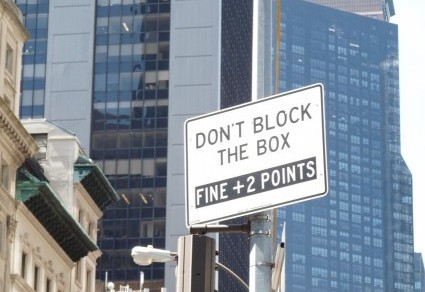Still summer, still hot, still trying to figure out what some signs mean. A little help, please!
 I understand “Credit and Non-Credit,” “Online,” “Leadership,” and STEM. (In case you aren’t familiar with the acronym, that’s “Science, Technology, Engineering, and Math.”) But “Location-Based”? Last time I checked, everything was in a location. Are students getting credit for thinking about where they are? I imagine this advertisement, which is from a university with an excellent reputation, refers to study abroad or in locations that invite scientific or sociological research (e.g. Antarctica or a rainforest). If so, say so, I thought. Then I tried to reword the line and came up empty. Suggestions?
I understand “Credit and Non-Credit,” “Online,” “Leadership,” and STEM. (In case you aren’t familiar with the acronym, that’s “Science, Technology, Engineering, and Math.”) But “Location-Based”? Last time I checked, everything was in a location. Are students getting credit for thinking about where they are? I imagine this advertisement, which is from a university with an excellent reputation, refers to study abroad or in locations that invite scientific or sociological research (e.g. Antarctica or a rainforest). If so, say so, I thought. Then I tried to reword the line and came up empty. Suggestions?
Here’s a physical/verbal oxymoron:

The posted bill (which the dictionary defines as “a written or printed notice”) outlaws itself. I spent some time wondering how to get around this problem. You could say, “Post no other bills,” but that sounds clunky and invites reactions such as “What’s so special about your bill?” A few weeks later I saw the same words stenciled on a wall. Does a stencil count as writing? Is a non-paper bill a bill? No idea. Thoughts welcome.
And there’s this beauty from the New York Times:
 The verb “refund” is transitive; that is, it takes an object. To whom is the bank refunding “Mr. Kemm”? Does he come in a large version of those bill-shaped envelopes you get when you withdraw a lot of cash? Is he shrink-wrapped, like (I imagine) deliveries from the treasury? Speculation invited.
The verb “refund” is transitive; that is, it takes an object. To whom is the bank refunding “Mr. Kemm”? Does he come in a large version of those bill-shaped envelopes you get when you withdraw a lot of cash? Is he shrink-wrapped, like (I imagine) deliveries from the treasury? Speculation invited.
I spotted this problem on a menu sign in the cafeteria of the Metropolitan Museum of Art. I couldn’t come up with a solution:
 I was fine with the first two lines and the last, but the third one stumped me. “Bolognaise” (often written as “Bolonese”) is a meat sauce. But before I got to that word, I pictured “house-made beef” and immediately wondered where the Met was raising its cattle. In those mysteriously roped off galleries? Hidden in the basement and taken out at night to graze in Central Park? My first thought was to drop “beef” as unnecessary information. But I did a little more research and found that Bolognaise sauce may contain beef or pork, or, for all I know, ostrich or aardvark. So “beef” is actually essential information. I spent several hours trying to reword the sign to avoid the cattle-on-Fifth-Avenue issue. (Yes, I really should get a new hobby.) My best answer was a comma after “house-made.” I could also envision a hyphen (beef-bolognaise). Neither satisfied me as much as the pasta, which was quite good. Chefs, how would you word this sign?
I was fine with the first two lines and the last, but the third one stumped me. “Bolognaise” (often written as “Bolonese”) is a meat sauce. But before I got to that word, I pictured “house-made beef” and immediately wondered where the Met was raising its cattle. In those mysteriously roped off galleries? Hidden in the basement and taken out at night to graze in Central Park? My first thought was to drop “beef” as unnecessary information. But I did a little more research and found that Bolognaise sauce may contain beef or pork, or, for all I know, ostrich or aardvark. So “beef” is actually essential information. I spent several hours trying to reword the sign to avoid the cattle-on-Fifth-Avenue issue. (Yes, I really should get a new hobby.) My best answer was a comma after “house-made.” I could also envision a hyphen (beef-bolognaise). Neither satisfied me as much as the pasta, which was quite good. Chefs, how would you word this sign?






























 If they’re “certified,” they can’t be that bad, right? Don’t ask me what they’re “certified” in (or “of,” as the sign says). At least they’re in NY — well, make that “Ny,” but nothing’s perfect. Not even verbals.
If they’re “certified,” they can’t be that bad, right? Don’t ask me what they’re “certified” in (or “of,” as the sign says). At least they’re in NY — well, make that “Ny,” but nothing’s perfect. Not even verbals.


